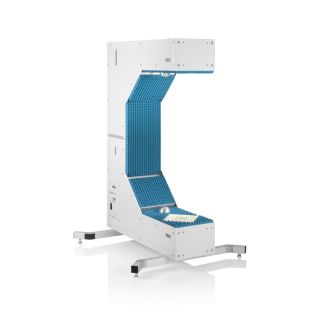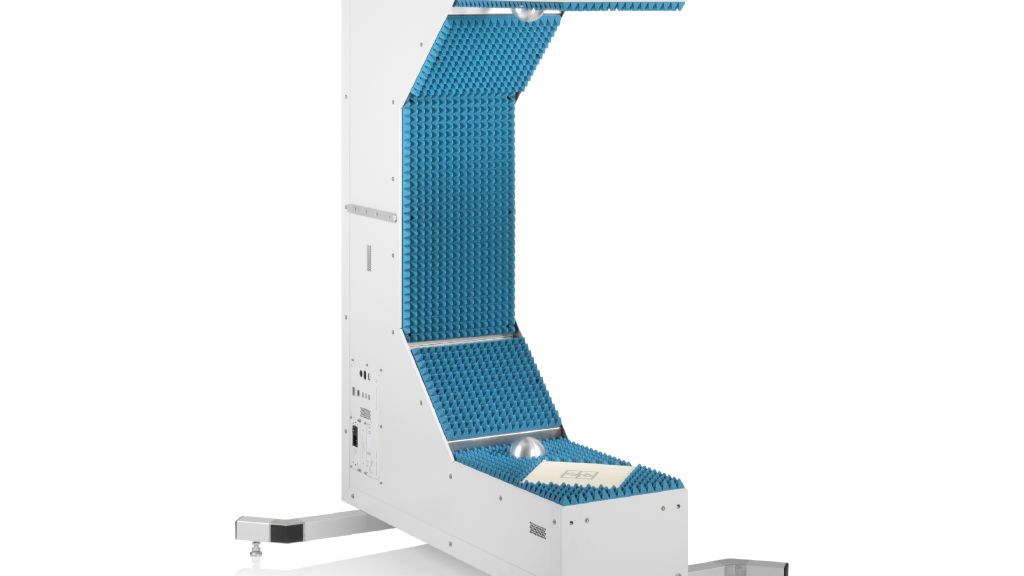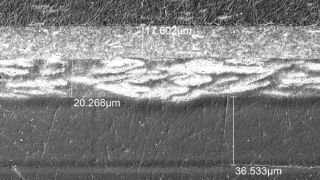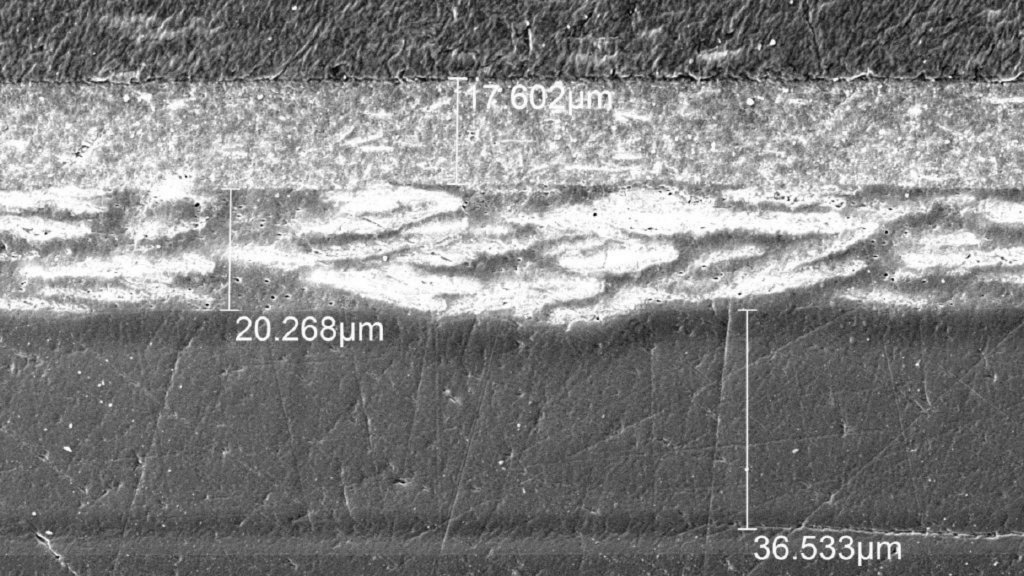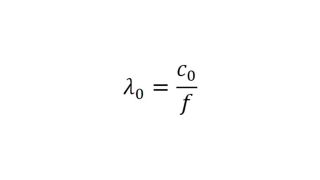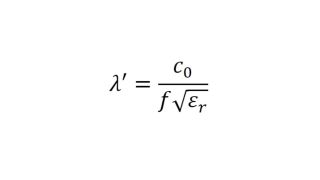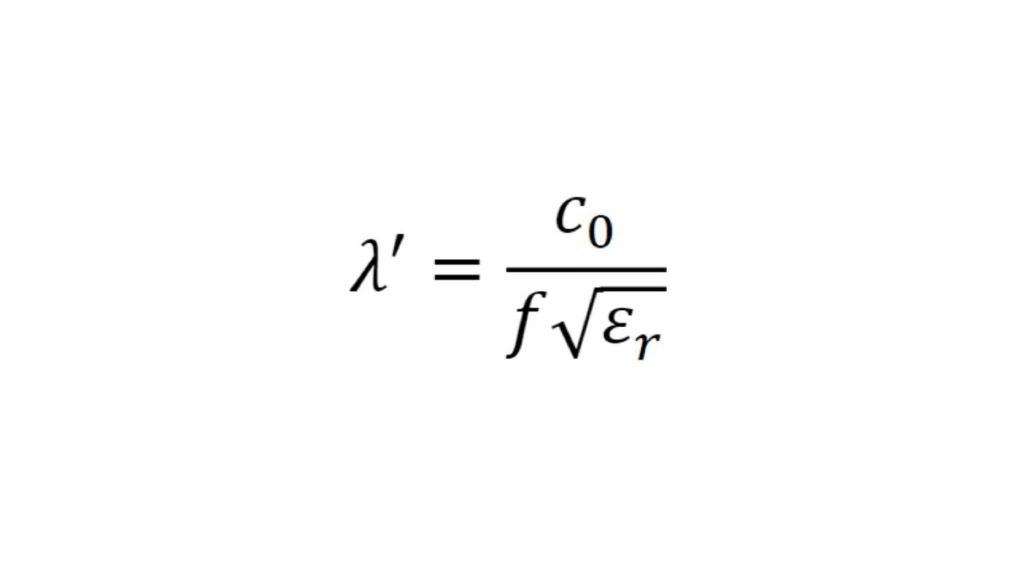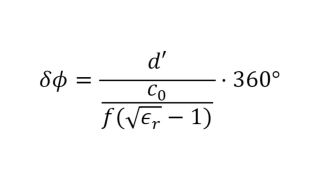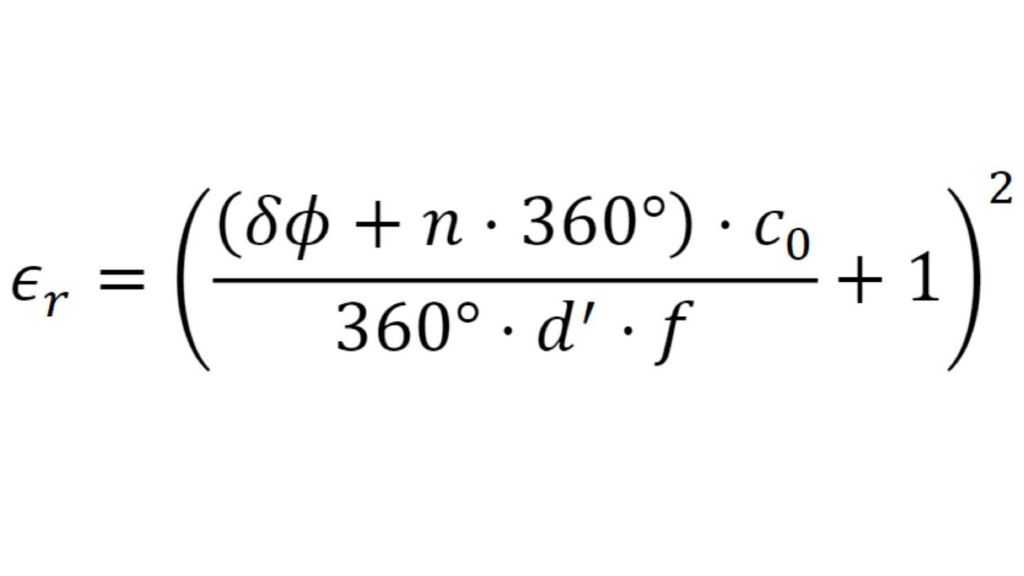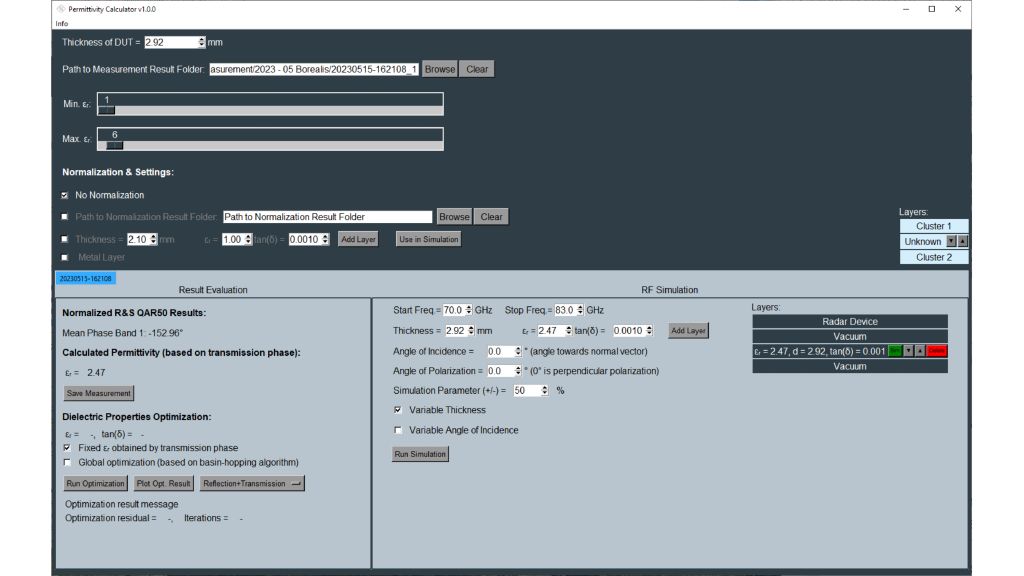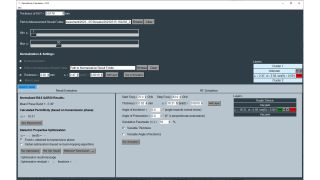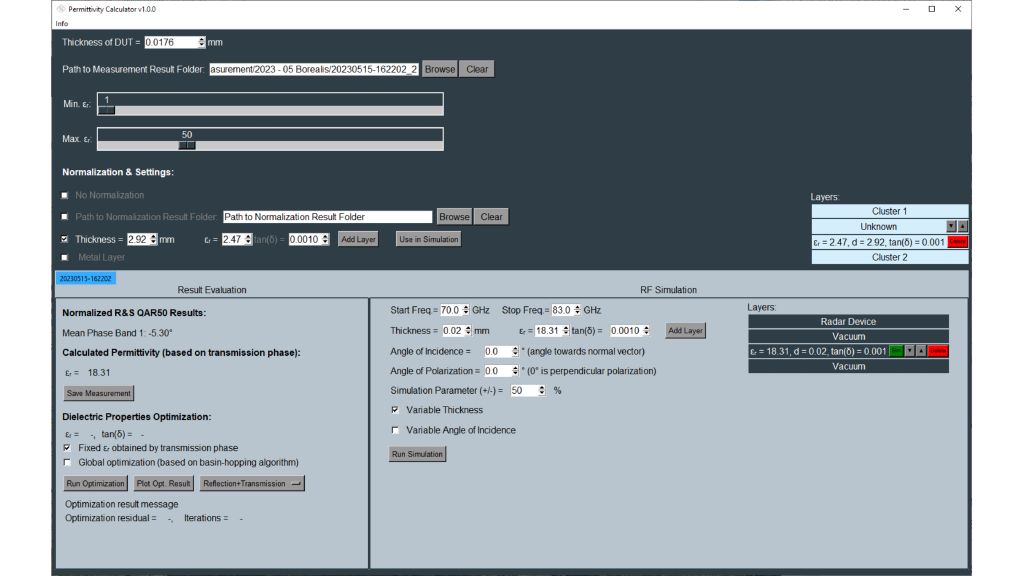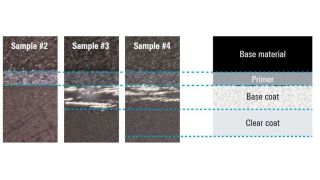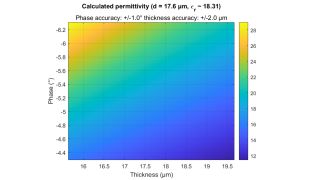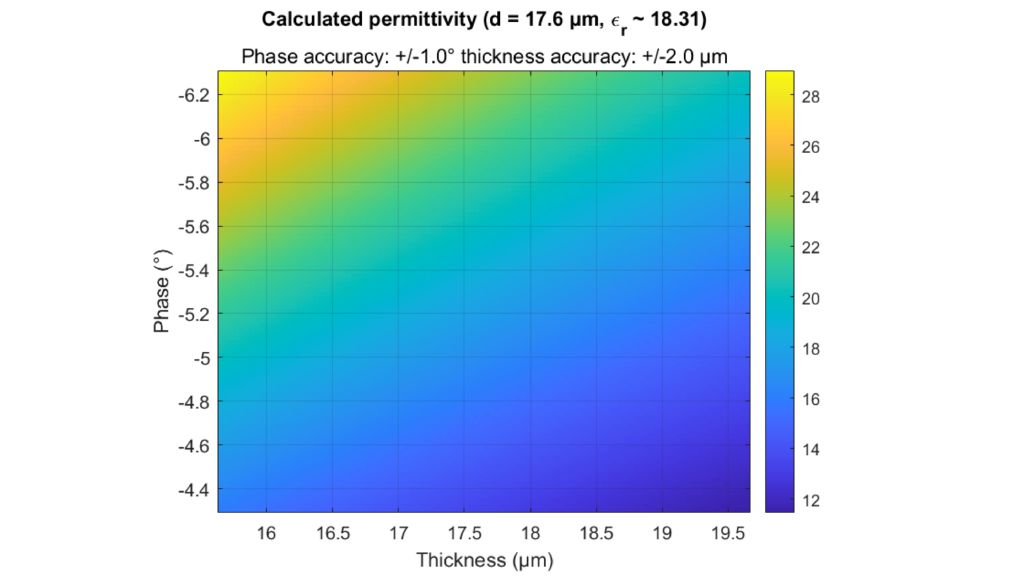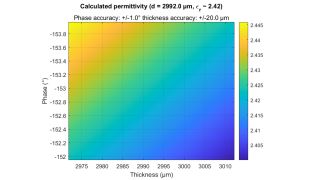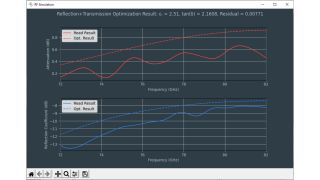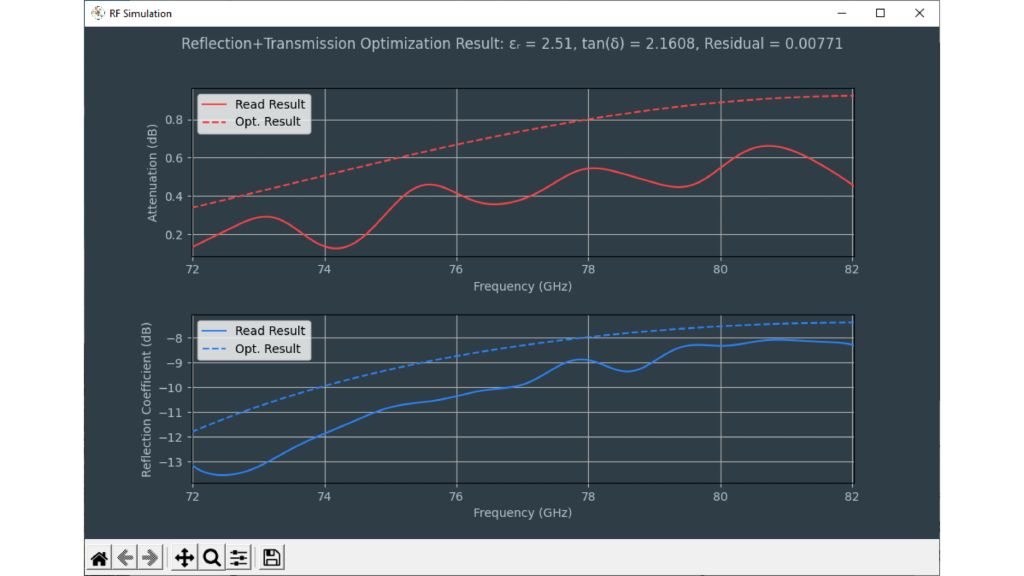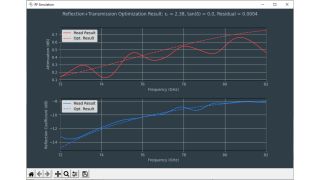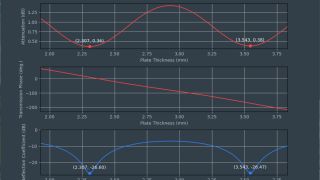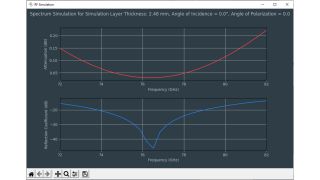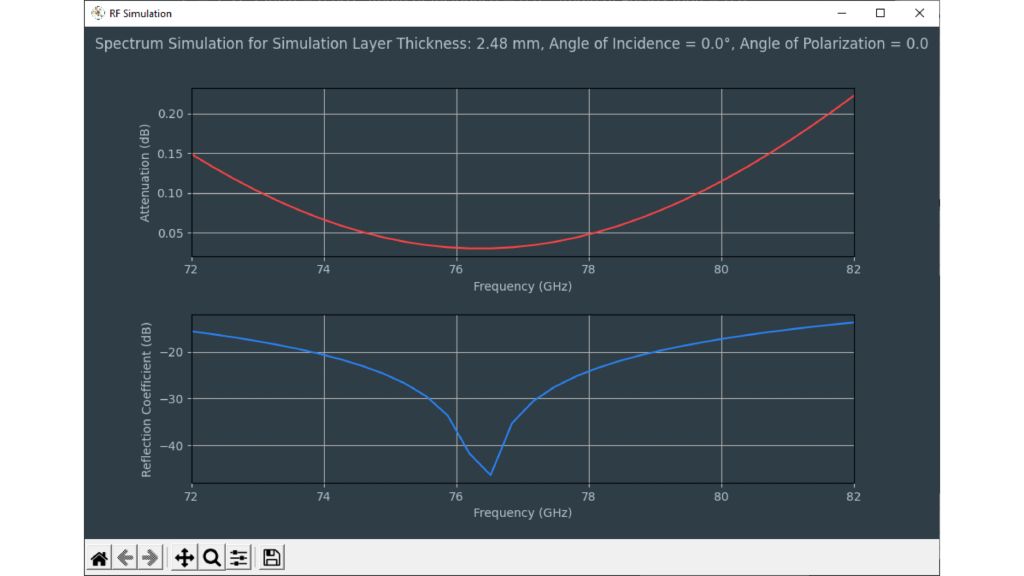Dielectric property optimization
The permittivity and the loss factor must be known to simulate material and material stacks and create a virtual duplicate of a radome. The relative permittivity εr correlates with the compression factor of the wavelength within the material, whereas the tan δ (loss factor) characterizes the specific attenuation of a transmitted signal from the layer.
The Rohde & Schwarz permittivity calculator can be used for both parameters and is ideal for radome layer simulations.
The tools for dielectric property estimation are in the lower left corner of the permittivity calculator software. The calculator uses an optimizer to find the best fit between measured and calculated frequency responses based on permittivity and loss factors. Users can choose between different calculation methods by checking:
- “Fixed εr obtained by transmission phase” optimizes only tan δ while relative permittivity remains fixed
- Unchecked, the optimizer has more freedom to improve relative permittivity; the relative permittivity calculated from the transmission phase acts as the initial value
Both methods have similar results for most materials. The transmission phase can be measured very accurately and is always a good point to start optimization.
“Optimize using logarithmic scale (dB)” sets the optimizer to work with a logarithmic curve to increase estimation accuracy for materials with resonance inside the R&S®QAR50 frequency band.
Global optimization uses multiple, randomly distributed starting points close to the calculated permittivity value to avoid optimizing into a local minimum.
The reflection curves from cluster 1 (S11) or cluster 2 (S22) are available for customer-specific applications.



